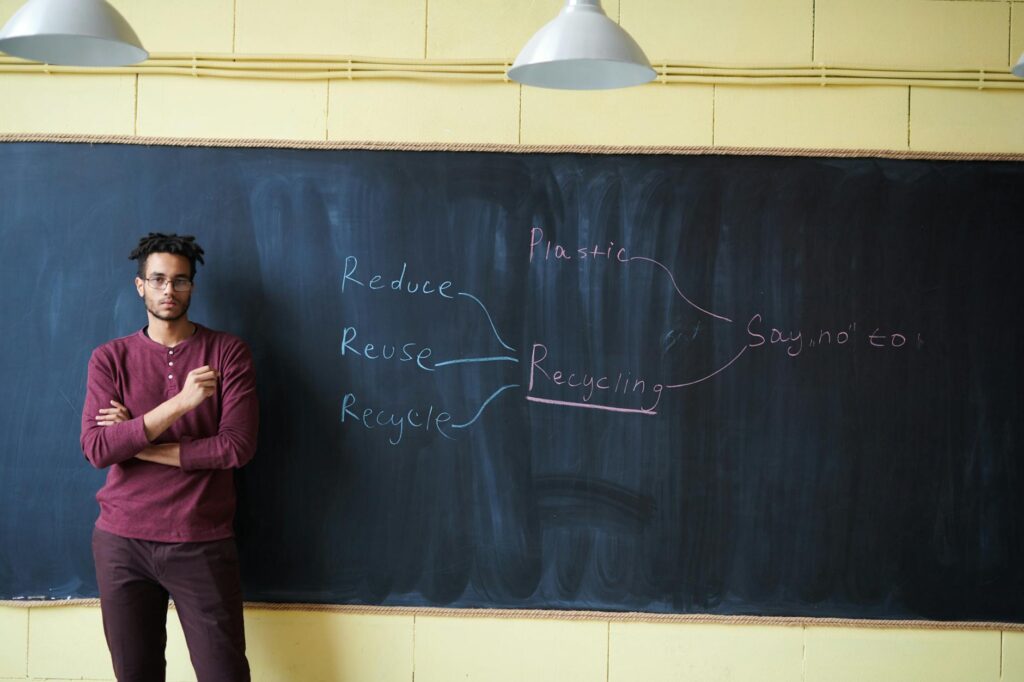What is learning environment?

What is Learning Environment?
Creating an effective learning environment is essential for both personal and professional development. It’s the backdrop where learning occurs, influencing how we interact with information, each other, and ourselves. But what exactly encompasses a learning environment, and why is it so critical? Let’s explore these questions and discover the intricate components that make up this fundamental aspect of education and growth.
Components of a Learning Environment
To understand the concept of a learning environment, we need to break it down into its main components. These elements work together to create a space where learning can thrive.
Physical Environment
The physical environment includes everything from the classroom layout to lighting and resources. This space can impact concentration and comfort levels. For instance, classrooms arranged in a circle promote discussion, while traditional rows can lead to passive learning.
Factors like proper lighting, comfortable seating, and access to necessary materials can significantly affect a learner’s ability to focus. A study showed that a comfortable physical setting can enhance productivity, demonstrating how much our surroundings matter in the learning process. Read about it here.

Photo by fauxels
Social Environment
The social environment refers to the interactions we have with peers, mentors, and instructors. Collaboration fosters a sense of community, which can boost motivation and engagement. When learners feel supported, they’re more likely to participate actively.
Instructors play a crucial role here. A teacher who encourages questions and discussions creates a safe space for students to express their thoughts. This interaction can make learning more enriching and effective. It’s vital to understand that learning is not just an individual journey; it’s a shared experience.
Emotional Environment
The emotional environment encompasses the psychological atmosphere of a learning space. A supportive and positive emotional climate is crucial for effective learning. When students feel valued and respected, they’re more likely to take risks and explore new ideas.
Creating an emotionally safe space allows learners to express themselves without fear of judgment. This aspect is often overlooked but is equally important in fostering an environment conducive to personal growth. As highlighted in research, feeling secure in one’s learning environment can significantly influence overall performance. For more insights on fostering a positive emotional environment, check this resource.
Types of Learning Environments
Learning environments can take on various forms, each serving different needs and contexts.
Formal Learning Environments
These are structured environments, like schools and universities, where learning follows a specific curriculum. In these settings, students are often assessed through tests and grades. This formal structure can help learners build foundational knowledge systematically.
However, this environment isn’t without its challenges. Some students may find traditional classroom settings stifling, leading to disengagement. It’s essential to balance structure with creativity to enhance the learning experience.
Informal Learning Environments
In contrast to formal environments, informal learning happens outside traditional educational settings. This includes community workshops, online platforms, and self-directed learning. Here, learners can pursue interests at their own pace, often leading to deeper engagement.
The flexibility of informal environments enables individuals to tailor their learning experiences to their preferences. For example, online learning platforms provide diverse resources that cater to various learning styles. Discover more about informal learning environments here.
Virtual Learning Environments
With the rise of technology, virtual learning environments have become increasingly popular. These platforms allow learners to access educational resources and interact with instructors from anywhere in the world. Online courses, webinars, and collaborative projects are all part of this new landscape.
While virtual learning provides flexibility, it can also present challenges, such as the lack of face-to-face interaction. However, when designed effectively, these platforms can enhance learning by providing diverse resources and opportunities for collaboration.
Impact of Learning Environments on Productivity
The setup of a learning environment can significantly influence productivity, engagement, and retention of information.
Enhancing Learning Outcomes
A well-structured learning environment can lead to improved learning outcomes. When students feel comfortable and supported, they tend to engage more deeply with the material. Research has shown that positive learning environments can increase retention rates and enhance overall performance. When students thrive, so do their results.
Adapting Learning Environments for Different Needs
Every learner is unique, and their environments should reflect this diversity. By adapting learning settings to accommodate various styles and needs, educators can create inclusive experiences that resonate with everyone. This approach not only enhances engagement but also promotes equity in learning.
Consider implementing flexible seating arrangements or using a mix of teaching methods to cater to different preferences. Resources that provide insight into adapting learning environments can be found here.
Conclusion
In summary, the learning environment plays a pivotal role in shaping how we acquire knowledge and develop skills. By understanding the components that contribute to effective learning spaces—physical, social, and emotional—we can create settings that foster growth and engagement. Embracing the various types of learning environments and their impacts can lead to improved productivity and outcomes for learners of all ages. So take a moment to assess your own learning environment. Is it supporting your growth or holding you back? Finding or creating the right environment could be the key to unlocking your full potential.